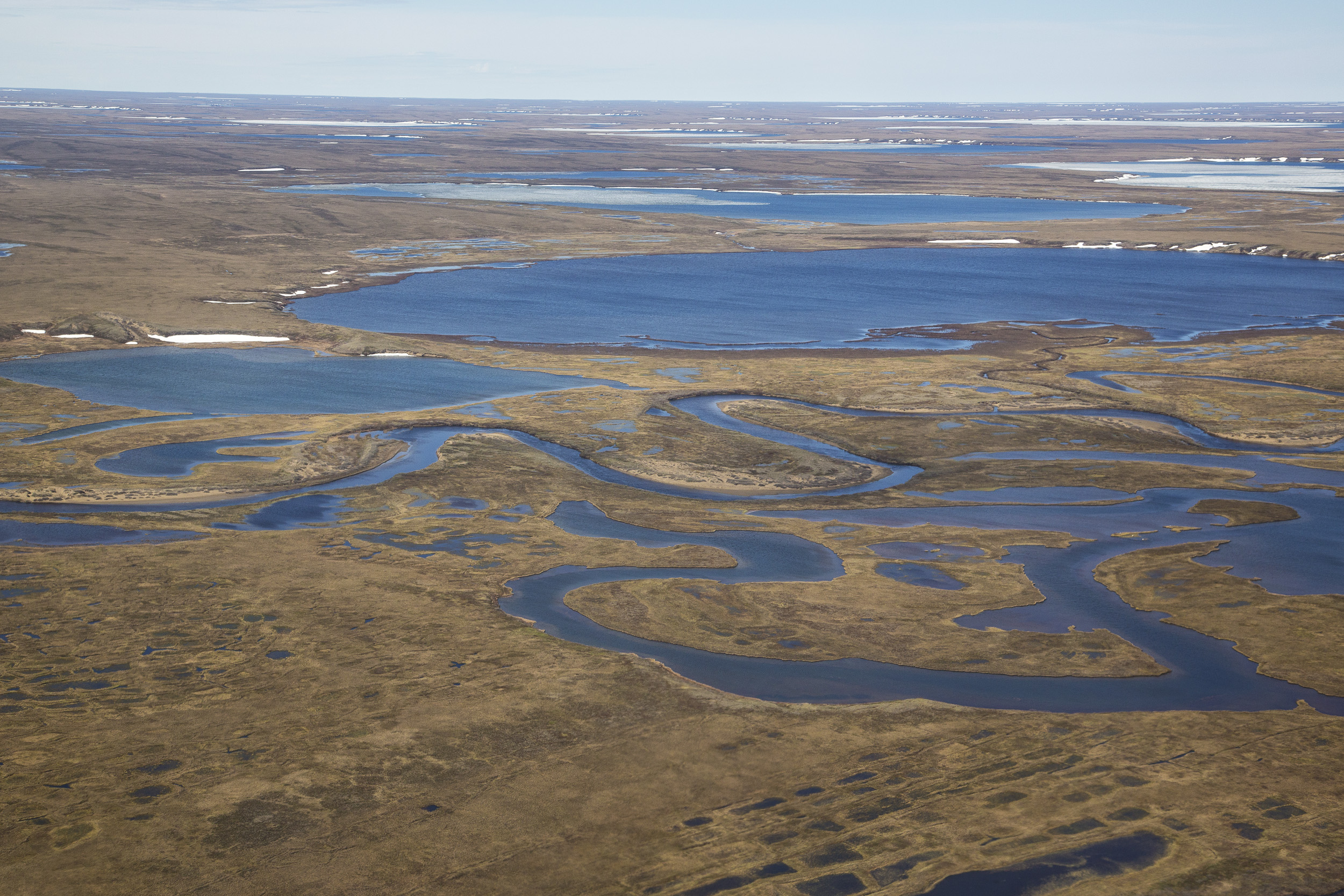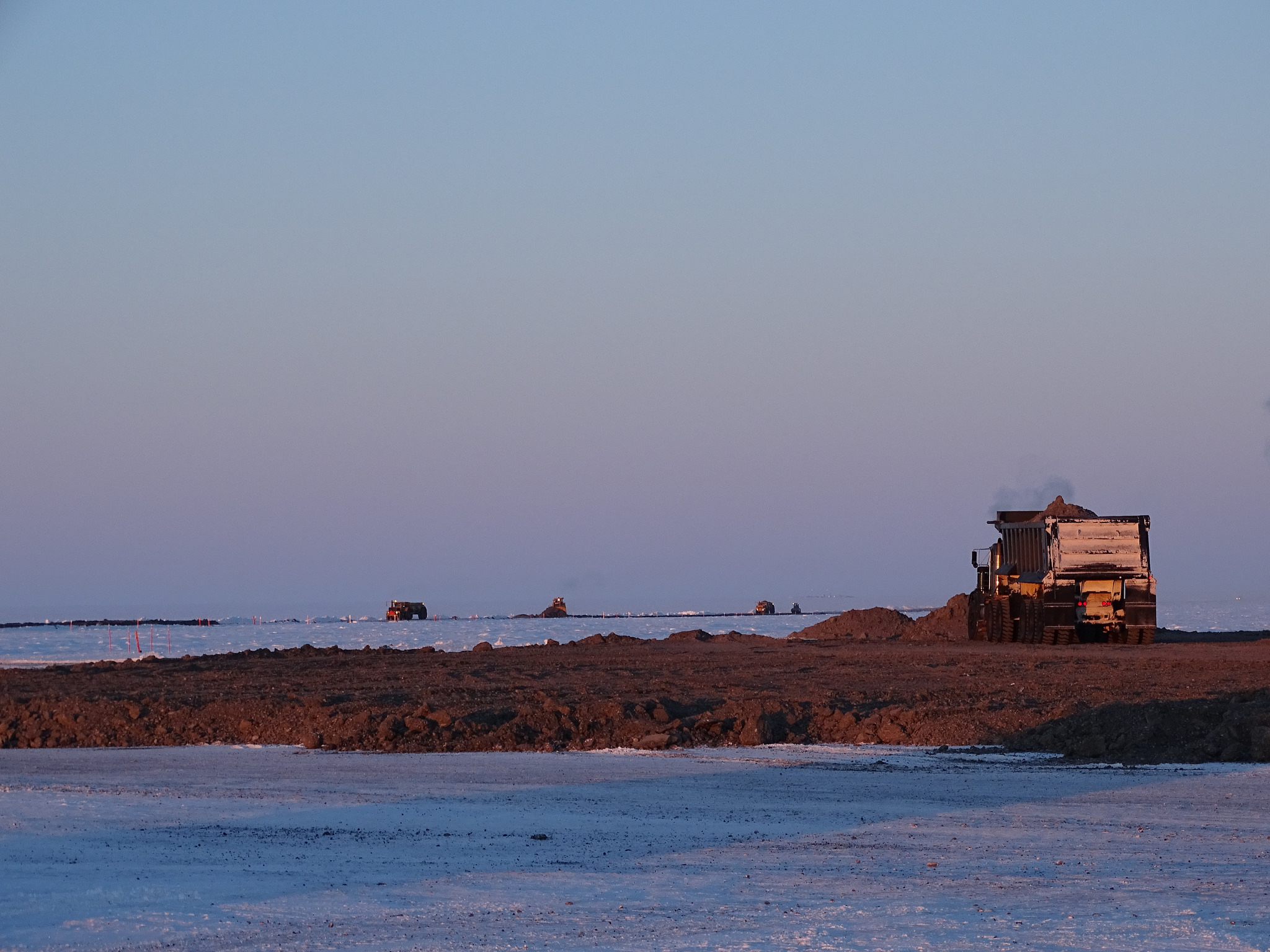With a new environmental review, the Trump administration moves closer to opening more Arctic Alaska land to oil development
A draft environmental impact statement aims to open more of the National Petroleum Reserve-Alaska to drilling.

The Trump administration’s overhaul of the management plan for a vast area in Arctic Alaska could open up much more territory to oil development, including sensitive wetlands, riverbanks and coastal areas currently protected as important habitat for migratory birds and caribou.
The U.S. Bureau of Land Management late Thursday released a draft environmental impact statement on a new Integrated Activity Plan for the National Petroleum Reserve in Alaska. The plan, which offers aggressive options for new oil development, is intended to replace an Obama administration plan that put about half of the reserve off-limits to oil leasing.
The draft EIS presents four action alternatives, two that would maintain or expand current protections and two that would ensure that 75 percent to 81 percent of the reserve’s territory is open to oil and gas leasing.
The Trump administration has made clear that the goal of the rewrite is to allow more oil development in the reserve to oil development.
“With advancements in technology and increased knowledge of the area, it was prudent to develop a new plan that provides greater economic development of our resources while still providing protections for important resources and subsistence access,” Chad Padgett, the BLM’s Alaska state director, said in a statement that accompanied the new draft EIS. “This is one of several actions we are taking to further expand responsible energy development based on substantial input, and we will continue seeking public input in this phase of the analysis.”
The rewrite was launched by former Interior Secretary Ryan Zinke in a 2017 secretarial order, which also pushed for oil development in the Arctic National Wildlife Refuge and in the federally controlled Arctic waters. At the time, Zinke described the reserve as “land that was set up with the sole intention of oil and gas production” and said the land should be used for its “original intent.”
The draft EIS is subject to a 60-day public review. The BLM plans to follow up on that with a final EIS and a record of decision.
The 23 million-acre reserve, also called NPR-A, is on the western North Slope and sprawls from the Arctic Ocean to the Brooks Range foothills. The northeastern corner, which is closest to the legacy oil-field development on state land in the central North Slope, has been the site of recent oil discoveries and exploration and development activity.
The reserve also holds important habitat for masses of birds that migrate from as far away as the southern hemisphere, for fish and for caribou, polar bears and for other Arctic wildlife. It holds important archaeological and paleontological resources as well, including a site that has produced several new-to-science discoveries about polar life in the Cretaceous period.

Supporters of expanded oil development said they were happy to see the progress toward overhauling management of the reserve.
Those drilling supporters include Alaska’s all-Republican Congressional delegation, who blasted the Obama-era plan that is currently in place.
Sen. Lisa Murkowski called the draft EIS “a significant step toward a new plan that is more consistent with the legal purposes of the petroleum reserve, which holds the potential for billions of barrels of recoverable oil that can help refill the Trans-Alaska Pipeline.”
“We have recently learned a great deal about the abundant resources of the NPR-A, and updating the deeply flawed 2013 IAP to provide greater access is necessary to reflect our opportunities for responsible development,” she said in a statement.
In the statement, Sen. Dan Sullivan said the Obama administration “was dead set on locking up the NPR-A which, in turn, stunted our economy.” And Rep. Don Young called the 2013 activity plan “an overly-restrictive disaster for Alaskans who know our lands can be responsibly developed.”
But Pat Pourchot, who served as the Obama administration’s special assistant for Alaska issues, and who helped craft the plan, defended it as balanced. The pending rewrite, he said, will upset that balance.
“This is an example of rolling back, I would argue, some very common-sense protections of resources that are owned by the American people,” Pouchot said.
He disputed the argument that oil development in the reserve has been stymied by Obama-era rules. “It’s not like there’s not anything happening in the reserve,” he said.
There are new operating fields in the areas that have been open, and several new fields in the works, he noted. Those include the Greater Mooses Tooth-2 field, where ConocoPhillips plans to start production in 2021, and the Willow prospect, which ConocoPhilips is seeking to develop into a field producing more than 100,000 barrels a day and which is in the regulatory review. Pourchot also mentioned annual lease sales that started prior to the Trump administration; the next of those sales is scheduled for Dec. 11 and will offer 3.8 million acres.
Indeed, ConocoPhillips — the company most active in the NPR-A — has announced an ambitious winter exploration plans, with up to seven new wells at Willow and at its Harpoon prospect farther to the southwest.
“This is going to be a big program this next year,” Scott Jepsen, a senior vice president at ConocoPhillips Alaska Inc., said Wednesday at the Resource Development Council for Alaska’s annual conference. This winter’s program follows an eight-well season last year, with much of that also focused on Willow, he said. From that drilling, the company has increased its resource estimate at Willow by 50 million barrels, so the total recoverable estimate now ranges between 450 million to 800 million barrels, he said.
Several environmental groups harshly criticized the Trump administration efforts to rewrite the reserve’s activity plan.
The administration “is determined to see Arctic Alaska only as a place to exploit for industrial profit,” Ryan Marsh, Arctic Program Coordinator for the Northern Alaska Environmental Center, said in a joint statement.
“Allowing increased oil development in the Western Arctic will contribute to climate change, threaten special areas, and put further pressure on subsistence users,” Rebecca Noblin, staff attorney at Earthjustice, said in the statement “The only defensible change to the IAP would be to make it significantly more protective.”
“This is part of the Trump administration’s ongoing and reckless effort to turn over our shared public lands with high ecological and cultural value to the oil industry in the midst of a climate crisis,” David Krause, Alaska assistant director for The Wilderness Society, said in the statement.
A particularly contentious part of the two development-increasing alternatives is the proposal to allow oil leasing and drilling in the sensitive area surrounding vast Teshekpuk Lake, which is now protected as one of the reserve’s five officially designated special areas.
Those alternatives propose opening either a significant part or the entire Teshekpuk Lake Special Area to oil leasing.
Teshekpuk Lake, with an Inupiaq name that means “big enclosed coastal water” or “big coastal lake,” rests atop permafrost and is the biggest lake in Arctic Alaska. It is the most prominent feature is a swath of lake- and pond-dotted tundra landscape. The lake is used annually by hundreds of thousands of migratory birds — making it a gathering site for 42 percent of the waterfowl that nest on the Arctic Alaska coastline, according to the draft EIS. The Teshekpuk Caribou Herd also uses the area for calving and for travel over passageways between bodies of water.
Development prohibitions at the lake and in the wetlands around it are longstanding.
The Department of the Interior in 1977 designated a Teshekpuk Special Area, in accordance with a 1976 law that requires minerals development in the reserve to be balanced by protections of Native needs and protection of “the scenic, historical, recreational, fish and wildlife, and wilderness values.”
Under the activity plan enacted in 2013, the Teshekpuk protected area more than doubled in size, from about 1.75 million acres to about 3.65 million acres.
But Teshekpuk Lake is in the northeastern corner of the NPR-A, the section of the reserve where oil discoveries and development have occurred and where there is believed to be the highest likelihood for oil discoveries. The Nanuskuk geologic formation runs through that area and is the source of oil at Willow and other prospects.
Another point of controversy could be the proposal to allow oil development in the Utukok River Uplands Special Area, a breeding site for the Western Arctic Caribou Herd and for birds of prey.
As part of the public review process, the BLM has scheduled eight public meetings for December and January, with six of them in North Slope communities.